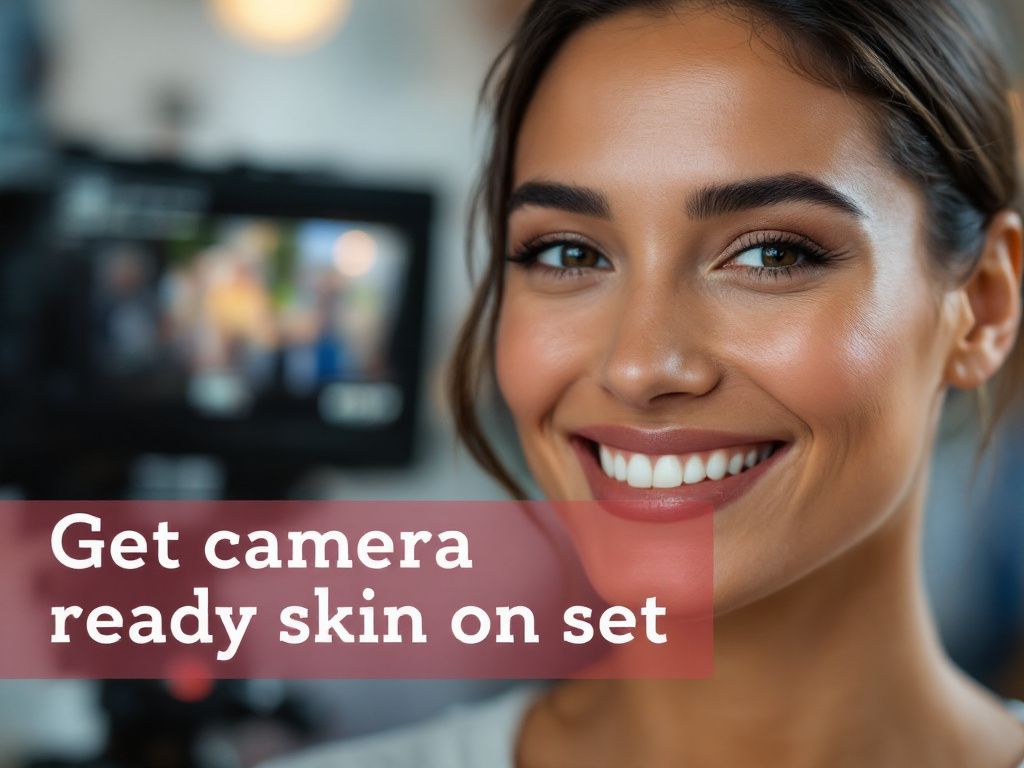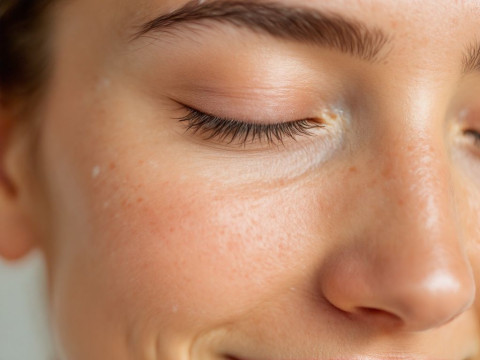Picture this: It’s 4:30 a.m., and your alarm rings through the silence of your room. You’re about to spend another long day on set. Maybe you’re the star of the show, or perhaps you’re part of the dedicated behind-the-scenes crew. Either way, working on a film set means long hours under harsh lights, which can be tough on your skin. “Skin preparation is key,” you’ve heard thrown around casually. But what does that really mean when facing a grueling shooting schedule?
Before we dive in, let’s chat about why skin preparation is so essential in the film world. Long hours spent under bright lighting and heavy makeup aren’t exactly kind to your skin. Trust me, I’ve seen the wear and tear firsthand. So, what are some steps you can take to keep your skin looking its best? Grab your coffee; let’s explore!
The Foundation: Why Proper Skin Preparation Matters
Proper skin care isn’t just for maintaining appearances—it’s about safeguarding your skin against the unforgiving elements of the film environment. Film sets can alternate between extremes: hot studio lights or cold outdoor shoots at dawn. Repeated exposure can lead to a weary complexion, breakouts, or even allergic reactions. Sounds scary, right? But worry not! With a solid skin preparation routine, you can emerge with glowing, camera-ready skin.
Here’s something to really consider. When your skin is well-prepped and cared for, makeup sits better. It blends smoothly, looks more natural, and lasts longer without patching or streaking. This saves precious time on touch-ups and boosts your on-camera confidence.
Crafting the Perfect Skin Care Routine
Creating a versatile skin care routine that adapts to your on-set demands is crucial. We’ll get into the nitty-gritty soon, but here’s a quick run-through:
- Cleansing
- Exfoliating
- Moisturizing
- Sun Protection
- 5. Makeup Primer
Each step plays a role in purifying, hydrating, and protecting your skin, readying you for whatever 14-hour day lies ahead. Let’s break them down some more.

1. Cleanse Thoroughly: Start with a Clean Slate
First off, think of your skin as a blank canvas. At the start of each day, removing all traces of residual makeup and impurities sets the perfect groundwork for effective skin preparation. Opt for a gentle cleanser that doesn’t strip essential oils from your skin.
**Classic Cleanser Routine:**
- Morning: Use a mild, hydrating cleanser to wake up your skin.
- Night: Choose a deep-penetrating, makeup-removing facial wash. Add a double-cleanse method if necessary for heavy makeup days.
2. Exfoliate Wisely: Slough Away the Day
Ever notice that build-up of flaky skin that somehow appears under makeup? Exfoliating helps with that. It’s a crucial routine that clears away dead skin cells, revealing the fresh layer beneath. Stick to gentle exfoliation techniques around three times a week. An overzealous scrub is tempting but avoid anything that might irritate sensitive skin, especially before a long day on a film set.
3. Hydrate and Moisturize: Lock in That Dewy Glow
Long hours deplete your skin’s moisture reservoirs, particularly under dry artificial lights. Throw in some traveling and weather changes, and you have a recipe for dehydration. Keeping the skin hydrated is your frontline defense.
**Hydration Heroes:**
- Serums Can contain hyaluronic acid for plumping effects.
- Moisturizers Dabble between gel-based if you’re oily-prone or a richer cream if your skin is on the dry side.
Layer serums beneath your moisturizer to lock in the moisture snugly. Seriously, it’s a game-changer.
4. Sunscreen: Your Best Friend

Adage alert—but totally true: Always wear sunscreen. The film set’s lighting and outdoor scenes expose you to UV damage. Sun protection acts as your early aging shield, ideal for maintaining a youthful appearance. Even fluorescent lighting can be surprisingly harmful, so trust me on this bracket out at least SPF 30 every a.m.
5. The Magic of Primers
This isn’t just about extending makeup wear. Primers serve to smooth skin’s surface, fill pores, and create a barrier between the-them skin and breathtaking foundation shades. When done right, makeup sits pretty neatly! Now, who wouldn’t want that kind of magic touch for their skin?
On-Time Film Set Tips: Keeping Your Skin Fresh During a Shoot
Even with preparation, film days can be rough. Here’s where a few mid-day salvation tactics and products might make the difference for skin under stress. Say you’re witnessing a flare-up or your makeup begins to melt. Here’s what to do.
Mid-Day Fixes
- Blotting Papers Perfect for soaking up excess oil without losing your glow. Keep them handy!
- Facial Mist A hydrating mist is like a spa break in a spray. Revitalizes weary skin—like turning water into gold.
- Compact Powder A few dabs subdues shine for quick on-set touch ups.
Choose the Right Products
Everyone’s skin has its unique personality, and the choice of skin products really matters. Some tingling sensations might mean the active ingredient isn’t your skin’s best friend. Tune into cues, and discover the right brands with hypoallergenic and non-comedogenic labels that scream, “I’m safe on your skin.” Consult professionals to curate what aligns perfectly with your needs.
Sustainable Skin for Long-Term Well-Being
Beyond the immediate, think sustainability; it’s about more than beauty alone. Woo that skin of yours into beautiful, permanent equilibrium. Here’s where settling into consistent patterns and dietary coordination will grant you the rewards of radiant skin.

Building Good Habits
- Don’t skimp on cleansing.
- Invest only in tried and trusted products.
- Avail downtime between shoots for a full skincare weekend.
Avoid common mistakes: neglect, drastic changes, dehydration, poor makeup hygiene. Repeat after me; block these bad habits fast!
Makeup Aftercare Post-Shoot
After your shoot, the temptation to crash is real. Muster up energy for one final round of skin care trust this matters.
- Remove makeup with designated removers and cleanse supportively.
- Follow with hydration essentials.
- Allow your pores to breathe.
Embrace calming serums or overnight treatments. Your skin will thank you and so will tomorrow’s shooting schedule.
Wrapping Up: Key Takeaways
Let’s circle back. Film set skin dilemmas aren’t as daunting when paired with purposeful prep and diligent practice:
- Start with essential cleansing and hydrating methods tailored to day’s plans.
- Accentuate moisture and shield the skin from UV and studio light harms.
- Cater mid-day touch-ups aptly with filler-friendly aides.
- Personalize product selection echoes well with skin types.
- Ensure nightly repair brings everything full circle.
Consider your skin preparation routine as the screenplay for your on-set performances. With protection, nourishment, and a zest of thoughtfulness, it will propel you towards fulfilling, memorable days on set.
Are you ready? Go ahead out there. Feel confident and camera-ready with resplendent skin, basking as the main character of this journey called filmmaking!
Frequently Asked Questions
Why can’t I use regular soap, lotion, cream, powder, or deodorant after using antiseptic skin preparations like Hibiclens or CHG?
These products may interfere with the antiseptic’s binding to your skin and decrease its effectiveness. Using regular soap, lotion, cream, powder, or deodorant after antiseptic skin preparations can reduce the antimicrobial efficacy of the prep solution[3][1].
Why do I need to apply antiseptic skin preparations to my entire body when the surgery is only on a small area?
The microbiome is present everywhere on your skin, and applying antiseptic skin preparations to the entire body helps decrease the overall bacterial presence, reducing the risk of post-operative infections[3][1].
What if I experience a rash or skin irritation after using antiseptic skin preparations?
If you develop a rash or skin irritation, do not proceed with the second skin cleansing and notify the pre-operative staff on the day of surgery. They may instruct you to use a different soap or apply the antiseptic only to targeted areas[1][3].
Which factor should I consider first when deciding between different antiseptic skin preparations?
The primary factor to consider is the antiseptic effectiveness of the preparation. This depends on the chemical composition, concentration, and the specific needs of the patient, including the location of the surgical site and the patient’s skin condition[5].
References










